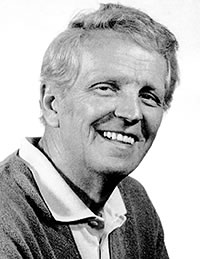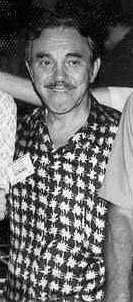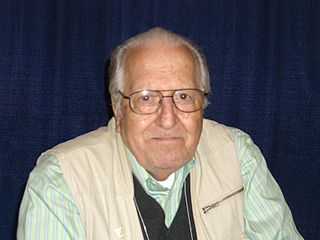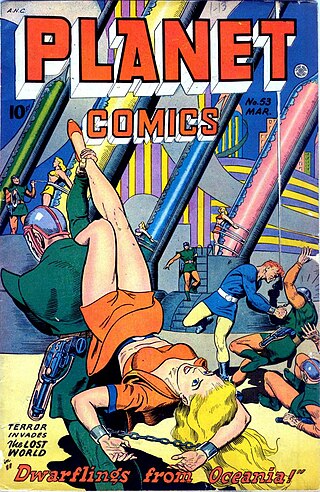
William Erwin Eisner was an American cartoonist, writer, and entrepreneur. He was one of the earliest cartoonists to work in the American comic book industry, and his series The Spirit (1940–1952) was noted for its experiments in content and form. In 1978, he popularized the term "graphic novel" with the publication of his book A Contract with God. He was an early contributor to formal comics studies with his book Comics and Sequential Art (1985). The Eisner Award was named in his honor and is given to recognize achievements each year in the comics medium; he was one of the three inaugural inductees to the Will Eisner Comic Book Hall of Fame.

The Spirit is a fictional masked crimefighter appearing in American comic books. Created by cartoonist Will Eisner, he first appeared as the main feature of a tabloid-sized comic book insert distributed in the Sunday edition of Register and Tribune Syndicate newspapers. Popularly referred to as "The Spirit Section", the insert ran from June 2, 1940 to October 5, 1952.

Sheena, Queen of the Jungle, is a fictional American comic book jungle girl heroine, originally published primarily by Fiction House during the Golden Age of Comic Books. She was the first female comic book character with her own title, with her 1941 premiere issue preceding Wonder Woman #1. Sheena inspired a wealth of similar comic book jungle queens. She was predated in literature by Rima, the Jungle Girl, introduced in the 1904 William Henry Hudson novel Green Mansions.

George Tuska, who early in his career used a variety of pen names including Carl Larson, was an American comic book and newspaper comic strip artist best known for his 1940s work on various Captain Marvel titles and the crime fiction series Crime Does Not Pay and for his 1960s work illustrating Iron Man and other Marvel Comics characters. He also drew the DC Comics newspaper comic strip The World's Greatest Superheroes from 1978–1982.

Samuel Maxwell "Jerry" Iger was an American cartoonist and art-studio entrepreneur. With business partner Will Eisner, he co-founded Eisner & Iger, a comic book packager that produced comics on demand for new publishers during the late-1930s and 1940s period known to fans and historians as the Golden Age of Comic Books.

Nicholas Viscardi, known professionally as Nick Cardy and Nick Cardi, was an American comics artist best known for his DC Comics work on Aquaman, the Teen Titans and other major characters. Cardy was inducted into the Will Eisner Comic Book Hall of Fame in 2005.
Bob Powell was an American comic book artist known for his work during the 1930–1940s Golden Age of comic books, including on the features "Sheena, Queen of the Jungle" and "Mr. Mystic". He received a belated credit in 1999 for co-writing the debut of the popular feature "Blackhawk". Powell also did the pencil art for the bubble gum trading card series Mars Attacks. He officially changed his name to S. Robert Powell in 1943.

Everett M. Arnold, also known as Busy Arnold, was an American publisher and an early comic-book entrepreneur whose company Quality Comics published during the 1930s and 1940s period fans and historians call the Golden Age of Comic Books. He was also instrumental in the publishing arrangement that led to Will Eisner's newspaper Sunday-supplement comics series The Spirit.

Mr. Mystic is a comics series featuring a magician crime-fighter, created by Will Eisner and initially drawn by Bob Powell. The strip featured in four-page backup feature a Sunday-newspaper comic-book insert, known colloquially as "The Spirit Section". It first appeared in 1940, distributed by the Register and Tribune Syndicate.

Planet Comics was a science fiction comic book title published by Fiction House from January 1940 to Winter 1953. It was the first comic book dedicated wholly to science fiction. Like most of Fiction House's early comics titles, Planet Comics was a spinoff of a pulp magazine, in this case Planet Stories. Like the magazine before it, Planet Comics features space operatic tales of muscular, heroic space adventurers who are quick with their "ray pistols" and always running into gorgeous women who need rescuing from bug-eyed space aliens or fiendish interstellar bad guys.
Charles J. "Jerry" Grandenetti was an American comic book artist and advertising art director, best known for his work with writer-artist Will Eisner on the celebrated comics feature "The Spirit", and for his decade-and-a-half run on many DC Comics war series. He also co-created the DC comic book Prez with Joe Simon.
Klaus Nordling was an American writer-artist for American comic books. He is best known for his work on the 1940s masked-crimefighter feature "Lady Luck", and as co-creator of the Marvel Comics superhero the Thin Man. Some of the early Nordling's pen names are Fred Nordley, F. Klaus, Ed Norris, and Clyde North.
John Law is a fictional character created by writer-artist Will Eisner in 1948. Law is an eyepatched, pipe smoking Crossroads Police Department detective, who, with his shoeshine boy sidekick Nubbin, was featured in an adventure planned for a new comic book series, but never published. The backup story was drawn by André LeBlanc. These completed stories were eventually adapted into Spirit stories, with John Law's eyepatch being changed to The Spirit's mask and Nubbin being redrawn to be Willum Waif, a Spirit supporting cast character.

Crack Comics is an anthology comic book series published by Quality Comics during the Golden Age of Comic Books. It featured such characters as The Clock, Black Condor, Captain Triumph, Alias the Spider, Madame Fatal, Jane Arden, Molly the Model, and Red Torpedo. The title "crack" referred to "being at the top of one's form", like a "crack sharpshooter".
Bernard Baily was an American comic book artist best known as co-creator of the DC Comics characters the Spectre and Hourman, and a comics publisher, writer, and editor.
Mystic Comics is the name of three comic book series published by the company that eventually became Marvel Comics. The first two series were superhero anthologies published by Marvel's 1930-1940s predecessor, Timely Comics, during what fans and historians call the Golden Age of comic books. The third, simply titled Mystic, was a horror fiction-suspense anthology from Marvel's 1950s forerunner, Atlas Comics.
Fred Schwab was an American cartoonist whose humor panels and short features were published in a wide variety of comic books from at least 1938 to 1950, during a period fans and historians call the Golden Age of Comic Books. His notable comic-book appearances include Timely Comics' Marvel Comics #1, the first publication of the company that would become Marvel Comics; and some of the earliest publications of the companies that would become DC Comics.
Audrey Anthony Blum was an American comic book writer active during the 1930s and 1940s "Golden Age of Comic Books", known for her work with Quality Comics and other publishers and as one of the first female comics professionals in what was then an almost entirely male industry.
Eisner & Iger was a comic book packager that produced comics on demand for publishers entering the new medium during the late-1930s and 1940s, a period fans and historians call the Golden Age of Comic Books. Founded by Will Eisner and Jerry Iger, many of comic books' most significant creators, including Jack Kirby, entered the field through its doors. Eisner & Iger existed from 1936 to 1939.
The Register and Tribune Syndicate was a syndication service based in Des Moines, Iowa, that operated from 1922 to 1986, when it was acquired by King Features to become the Cowles Syndicate affiliate. At its peak, the Register and Tribune Syndicate offered newspapers some 60 to 75 features, including editorial cartoonist Herblock, comic strips, and commentaries by David Horowitz, Stanley Karnow, and others.










